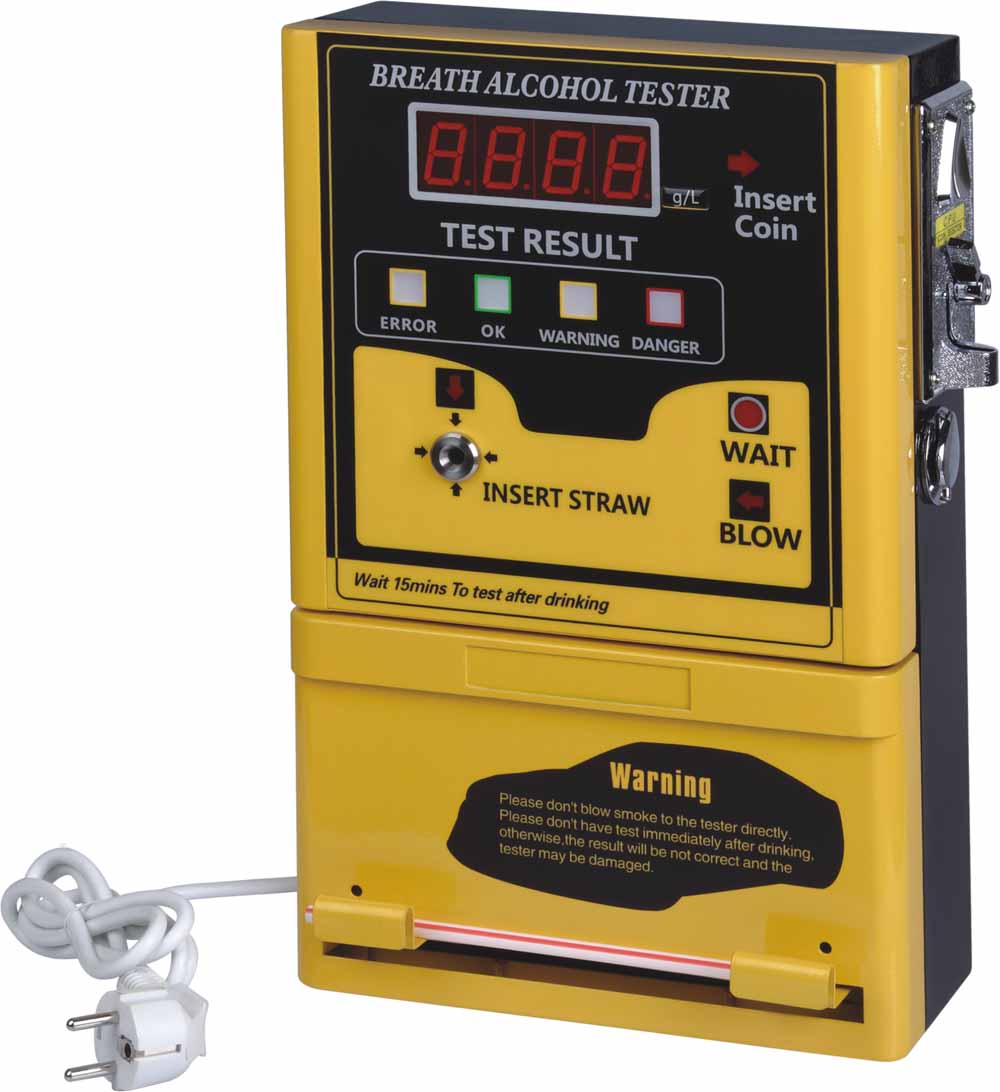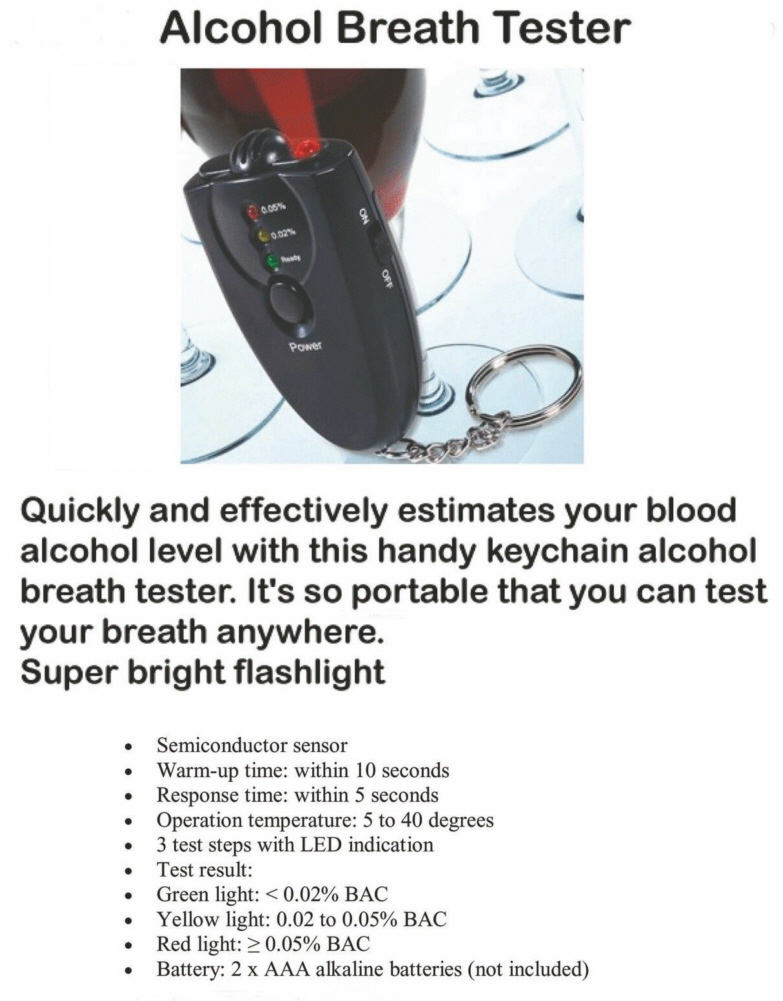Chemistry and Crime
In the USA, the most common source of injuries and deaths related to alcohol is
drunk-driving automobile accidents. Drunk driving fatalities account for about
a third of total deaths due to traffic crashes. These have decreased by over
50% since 1982 when the first drunk-driving statistics were collected, of
21113 deaths. In 2010, 32,885 people died in traffic crashes
of which 10,228 were thought to be alcohol related. In 2011 there were 9,878 fatal
alcohol related crashes whilst in 2012, 33,561 people died in traffic crashes
(latest figures available), including an estimated 10,322 people who were killed in
drunk driving crashes involving a driver with an illegal BAC (.08 or greater).
Among the people killed in these drunk
driving crashes, 65% were drivers (6,688), 27% were motor vehicle
occupants (2,824), and 8% were non-occupants (810), with an average
of one person dying in a drunk driving fatality every 51 minutes.
Additionally, around a quarter-million people are injured each year.
Law enforcement officers and prosecutors around the world rely
on breath alcohol testing to investigate and/or prove their "driving under
the influence", DUI and "driving while impaired (intoxicated)", DWI
cases. They use preliminary breath testing devices (also known as prearrest
breath testing devices or "PBTs") and passive alcohol screening
devices to identify impaired drivers, evidential breath testing devices
(EBTs) to prove their guilt, and ignition interlock devices to ensure that
they do not drive again under the influence.
Alcohol legal limits by country
The
Breathalyser
It is generally accepted that
Robert Borkenstein (1912-2002), a captain with the
Indiana State Police and later a professor at Indiana University
at Bloomington, was the first to create a device that could
measure a subject's blood alcohol level based on a breath sample.
In 1954, Borkenstein invented his breathalyzer that used
chemical oxidation and photometry to determine the alcohol
concentration.
The invention of the breathalyzer provided law enforcement with a
non-invasive test providing immediate results to determine an
individual's breath alcohol concentration at the time of testing.
Given that research by a physician (Francis Edmund
Anstie) into the possibility of using breath to test for
alcohol in a persons body dates as far back as 1874, this was
very slow in coming. Anstie is remembered for Anstie's limit
which is the amount of alcohol that he proposed could be consumed
daily with no ill effects. It is ~ 45 mL (1.5 ounces) of pure
ethanol or two to three "standard" drinks (depending on country).
Note that breath analyzers do not directly measure blood alcohol
content (BAC) or concentration, which requires the analysis of a
blood sample. Instead, they estimate BAC indirectly by measuring
the amount of alcohol in one's breath. Two breathalyzer
technologies are prevalent. Desktop analyzers generally use
infrared spectrometry, electrochemical fuel cell technology, or a
combination of the two. Hand-held field testing devices are
generally based on electrochemical platinum fuel cell analysis
and, depending upon jurisdiction, may be used by officers in the
field as a form of "field sobriety test" or PBT.
How do they work?
Henry's law states that when an aqueous solution of a volatile compound is
brought into equilibrium with air, there is a fixed ratio between the
concentration of the compound in air and its concentration in water.
This partition ratio is constant at a given temperature. The human body is
37° Celsius on average. Breath leaves the mouth at a temperature of
34° Celsius. Alcohol in the body obeys Henry's Law as it is a volatile
compound and diffuses in body water. Breathalyzers assume that all subjects
being tested have a 2100-to-1 partition ratio. It has been claimed, however
that the actual partition ratio may vary between 1300:1 to 3100:1 or wider
among individuals and even for the same individual over time.
Studies have suggested that about 1.8% of the population have a partition
ratio below 2100:1. Thus, a machine using a 2100-to-1 ratio would
overestimate the BAC. As much as 14% of the population has a partition ratio
above 2100, thus causing the machine to under-report the BAC. Further, the
assumption that the test subject's partition ratio will be average, i.e. that
there will be 2100 parts in the blood for every part in the breath, means
that accurate analysis of a given individual's blood alcohol by measuring
breath alcohol is difficult, as the ratio may vary considerably.
Other studies suggest that women on average have a lower partition ratio
than men, leading some to suggest that breathalyzers might be inherently
biased against women, since the lower the actual partition ratio
the higher the recorded result.
The first practical roadside breath testing devices intended for use by the
police were the Drunkometer (Rolla Harger) and
Intoximeter (Glen Forrester).
The drunkometer was developed in 1931 and patented in 1936. It was used to
directly collect a motorists breath sample in a balloon inside of the machine.
The breath sample was then pumped through an acidified potassium permangate solution.
If there was alcohol in the breath sample, the solution lost colour. The
greater the colour change, the more alcohol there was present in the
breath. The intoximeter used permanganate reactions as well.
Rolla Harger describes his Drunkometer
in the Journal of Criminal Law and Criminology (1931-1951),
Vol. 40, No. 4 (Nov. - Dec., 1949) (pp. 497-506)
"Since many police laboratories do not have graduate chemists,
we felt that there was a need for a simpler method which
could be handled by an intelligent police technician. The method
we developed for this purpose analyzes breath, and the reagent
for alcohol is standard permanganate in 56 per cent sulfuric
acid. In this concentration of sulfuric acid, which is much higher
than that commonly used by chemists for analyses with permanganate,
alcohol reacts rapidly and quantitatively with the permanganate
at room temperature. In the procedure we also
determine the weight of carbon dioxide in the sample of breath
required to decolorize the permanganate. This enables us to
calculate the volume of lung air in this sample of breath.
Normal lung air regularly contains close to 5.5 per cent of
carbon dioxide. Then, since it
has been found that 2000 cubic centimeters of lung air
contain practically the same weight of alcohol as 1 cubic centimeter
of blood, one can use the breath alcohol result to calculate
the level of blood alcohol. What we really determine in this
method is the weight of alcohol in the breath which accompanies
the weight of carbon dioxide found in 2000 cubic centimeters of
lung air, that is, the alcohol-carbon dioxide ratio of the subject's
breath. Our breath method was first announced in 1931
and, after several years of trial during which we compared the
results with direct analyses of blood, it was published more fully
in 1938. When asked what name we had chosen for the portable
apparatus used for the test we rather jokingly called it a
"Drunkometer". The name is admittedly crude but fairly
expressive, and it has stuck."
4 KMnO4(aq) + 5 CH3CH2OH(aq) +
6 H2SO4(aq)
↔ 5 CH3COOH(aq) + 4 MnSO4(aq) +
2 K2SO4(aq) + 11 H2O(l)
The Alcometer was developed in 1941 by Leon Greenberg
and employed a process
whereby iodine vapour, starch and potassium iodide were used. The chemicals
reacted with a motorists breath sample and changed colour depending on the
level of alcohol present. It proved to be operationally much less stable, and
thus less reliable than the other two first-generation instruments.
Early photovoltaic assays worked by using photocells to analyze the colour
change of a redox reaction. A breath sample was bubbled through an aqueous
solution of sulfuric acid, potassium dichromate, and silver nitrate.
The silver nitrate acted as a catalyst, allowing the alcohol to be oxidized
at an appreciable rate. The sulfuric acid provided the acidic conditions
needed for the Cr(VI)/Cr(III) redox reaction. In solution, the ethanol
reacted with the potassium dichromate, reducing the dichromate ion to the
chromium (III) ion. This reduction resulted in a change of the solution's
colour from red-orange to green. The reacted solution would be compared to
a vial of non-reacted solution by a photocell, this created an electric current
proportional to the degree of the colour change and was monitored by the
movement of the needle on a dial that indicated BAC.
3 CH3CH2OH(g) +
2 K2Cr2O7(aq)
+ 8 H2SO4(aq) ↔
3 CH3CO2H(aq) +
2 Cr2(SO4)3(aq)
+ 11 H2O(l)
Like other methods, breath testing devices using chemical analysis are
somewhat prone to false readings. Compounds that have compositions similar
to ethanol, for example, could also act as reducing agents, creating the
necessary colour change to indicate increased BAC.
Electrochemical Fuel Cells
The fuel cell consists of a deposit of gold and platinum on a porous disc.
Fuel cell technology is particularly suitable for portable screening devices,
due to the small size of the cells and the low power requirements of the
technology.
When the user exhales into a breathalyzer, any ethanol present in
their breath is oxidized to acetic acid at the anode:
CH3CH2OH(g) + H2O(l) ↔
CH3CO2H(l) + 4H+(aq) +
4e-
At the cathode, atmospheric oxygen is reduced:
O2(g) + 4H+(aq) + 4e- ↔
2H2O(l)
The overall reaction is the oxidation of ethanol to acetic acid and water.
CH3CH2OH(l) + O2(g) ↔
CH3COOH(l) + H2O(l)
The small electrical current produced by these reactions is
measured by a microprocessor, and an approximation of
overall BAC is displayed.
Infrared Optical Sensor
Breathalysers utilising infrared optical sensor technology provide much better
accuracy but the early technology was more suited for desktop evidential
breathalyser machines due to their bulkiness.
Changes in electronics and instrumentation over the past twenty years
though has meant that miniaturisation is possible and so portable instruments
are now in operation.
Non-dispersive Infrared (NDIR) sensors are simple spectroscopic devices
often used for gas analysis. The key components are an infrared lamp,
a sample chamber or light tube, a wavelength filter, and an infrared detector.
The gas is pumped or diffuses into the sample chamber, and the gas
concentration is electro-optically measured by its absorption at a specific
wavelength in the infrared (IR).
See the
YouTube video.
Dual Sensor Systems
For an account of the changes that have taken place in measuring alcohol
in the breath see a
brochure by a manufacturer. Their recent models use two measuring
systems with different analytical specificity so the device is capable of
reliably detecting any interfering substances that may be
present in the exhaled air and that might influence the result in any way,
such as petrol or paint vapours, acetone or solvent vapours.
Breathalyser
Myths and
potential errors
References
UWI students can see OurVLE for copies of some of the reports mentioned above.
Introduction
History
Modern Breathalysers
Acknowledgements.
Much of the information in these course notes has been sourced
from Wikipedia under the Creative Commons License. Students
taking this course will be expected to contribute to Wikipedia as
a part of their course assignments.
Continue to Narcotic Reagent Kits
or return to CHEM2402 course
outline.

This work is licensed under a Creative Commons
Attribution-ShareAlike 3.0 Unported License.
 Return to Chemistry,
UWI-Mona, Home Page
Created and maintained by Prof. Robert J.
Lancashire,
Return to Chemistry,
UWI-Mona, Home Page
Created and maintained by Prof. Robert J.
Lancashire,
The Department of Chemistry, University of the West Indies,
Mona Campus, Kingston 7, Jamaica
Created October 2011. Links checked and/or last
modified 7th November 2014.
URL
http://wwwchem.uwimona.edu.jm/courses/CHEM2402/Crime/Breathalyser.html



 Return to Chemistry,
UWI-Mona, Home Page
Created and maintained by Prof. Robert J.
Lancashire,
Return to Chemistry,
UWI-Mona, Home Page
Created and maintained by Prof. Robert J.
Lancashire,